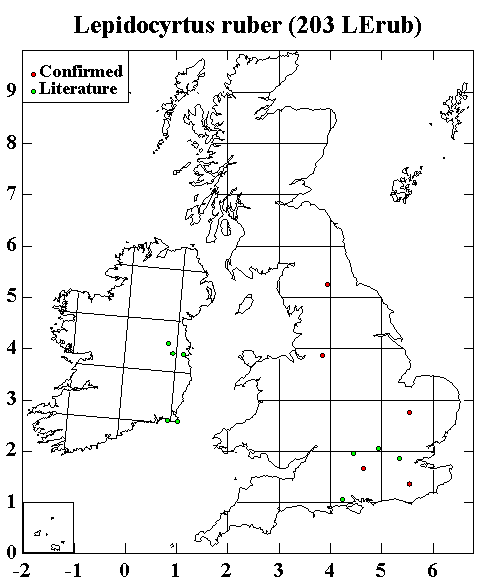|
Lepidocyrtus ruber is a pale species with traces of blue pigment on the head, thorax and legs. The largest specimen I have seen was 1.4 mm in length. The second thoracic segment is not prominent and there are no scales on the legs or antennae. It is very easy to identify under the microscope as the empodium on the foot is highly characteristic with a sharply angled tip (Fig. 1). This is extremely obvious and could not possibly be confused with any other species of Lepidocyrtus. Like all Lepidocyrtus, the mucro has two teeth and a spine (Fig. 2).
There are several widely scattered records which appear mostly to be from wet habitats (it has been suggested that the unusual shape of the empodium may be an adaptation for walking on water).
Back to main page
|
|





